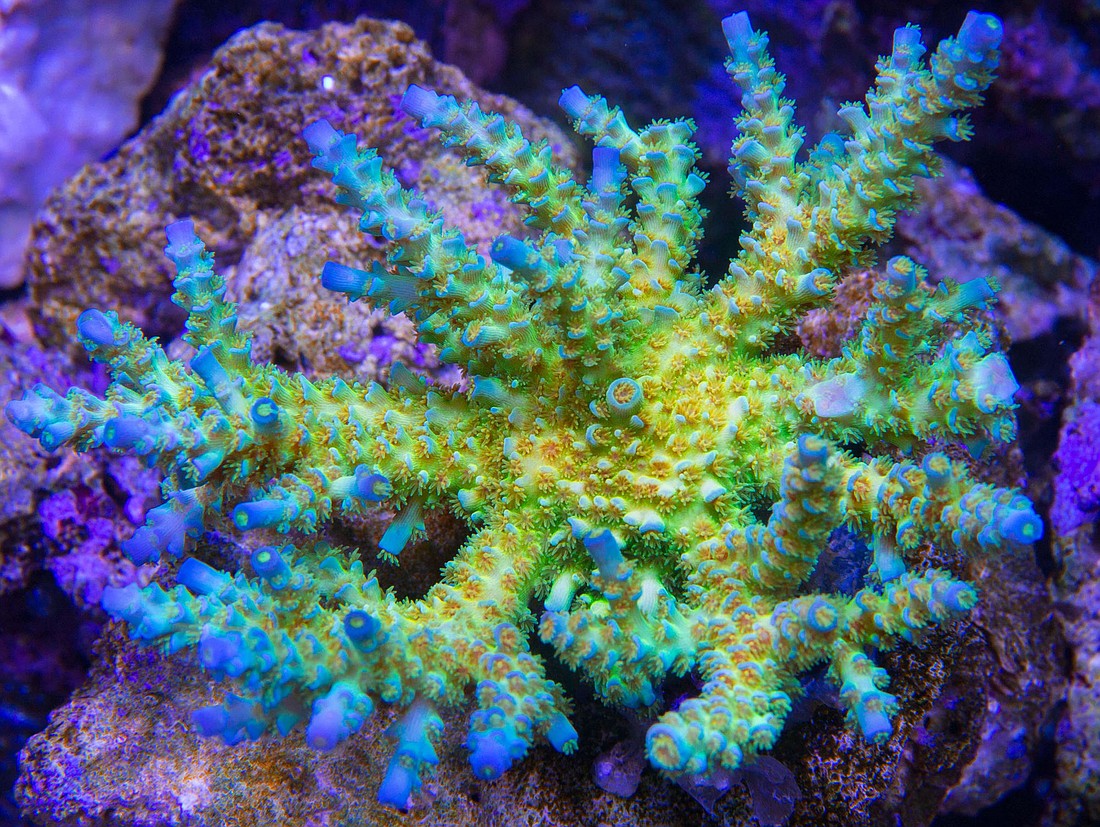- April 25, 2024
-
-
Loading

Loading

It’s colorful — and it’s alive!
Top Shelf Aquatics along Aloma Avenue in Winter Park is one of only a few spots in the state that has its own coral farm — growing vibrant, living decorations for aquariums.
The coral comes in all shapes and sizes. Some resemble psychedelic sunflowers, while others reach for the water’s surface with crooked, rainbow branches.
Every species has a peculiar name as well — including some named by Top Shelf Aquatics. “Bill Murray” has a red base with teal undertones, along with yellow/peach limbs and teal tips. “Fruity Pebbles” has bright orange, yellow, green and blue throughout. “Green Slimer” is predominantly covered in mossy green hairs, or polyps.
There are more than 300 unique species in the coral farm, housed in 2,000 gallons of water.
It’s an ecosystem of living color.
“It’s almost like art,” said Remy Lundy, one of Top Shelf’s many coral caretakers. “It’s a collector’s piece, and you watch her grow.”
HOW IT HAPPENS
The coral farming process all starts when a piece of raw coral is shipped in, usually coming from what’s known as the “Coral Triangle” — a region surrounded by Indonesia and Australia.
Coral is first inspected for its potential to grow into a colorful species. It then goes to the farm, where it goes through a process of “dips” that removes parasites and keeps the coral healthy.
Depending on its desirability, the coral is then either sold or grown into colonies and harvested for smaller pieces called “frags,” which are then sold to customers.
Collecting coral is a hobby that continues to grow. Conventions such as Reef-A-Palooza and MACNA, where the most well-known collectors show off their coral, take place across the country year-round.
Top Shelf Aquatics hopes to keep the hobby going strong by helping newcomers start their own tanks, General Manager Mitchell Grable said. The company hopes to educate the new hobbyists on how to properly take care of the colorful creatures through proper lighting and managing water quality.
“We build the hobby up around us,” Grable said. “In the past five years, the hobby has been growing. I’ve seen a lot more interest. Shows (such as) ‘Tanked’ have helped the hobby tremendously.
“We’ve been there for the hobbyists since Day 1,” he said. “We help them every step of the way from when they first start and buy their tank.”
A LOVE FOR THE OCEAN
The hobby may continue to grow even more in years to come, Grable said. With reefs such as the Great Barrier Reef slowly dying off the coast of Australia, soon, the only coral on Earth will be found in man-made tanks, he said.
“Sooner or later, we’re not going to be able to have all the abundance of coral that we can get now,” Grable said. “If we can’t import more, we have to grow it.
“I don’t want it to come to this, but this might be the way to reinvigorate the reefs out there,” he said. “We have these aquaculture pieces we can put back there and regrow. We love the ocean; that’s why we’re in this hobby.”
Watching an ecosystem grow and flourish is what makes the hobby so interesting, Lundy said.
“The relationships between everything in a reef tank and on a reef in the ocean is so complex,” he said. “There are so many small symbiotic relationships. I love learning every single day. Witnessing the relationships and watching everything grow — there’s nothing like it.”
Top Shelf Aquatics is looking to grow, too. The company plans to add another 800-gallon display tank and an area for shrimp, hermit crabs and snails, as well as an expansion of their farm.
For a moment, Grable looks over the tanks in the coral farm, his face showing just the slightest signs of pride. Huge light fixtures shine down into each tank, illuminating countless pieces of coral and creating a symphony of dancing bright neon colors.
“The future is pretty bright for us,” Grable said.